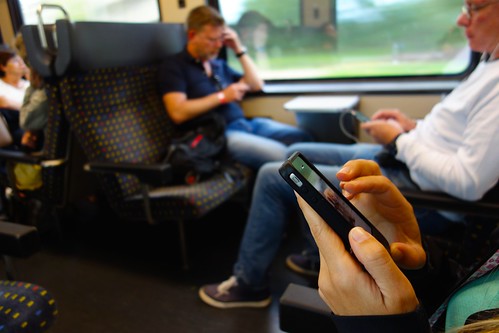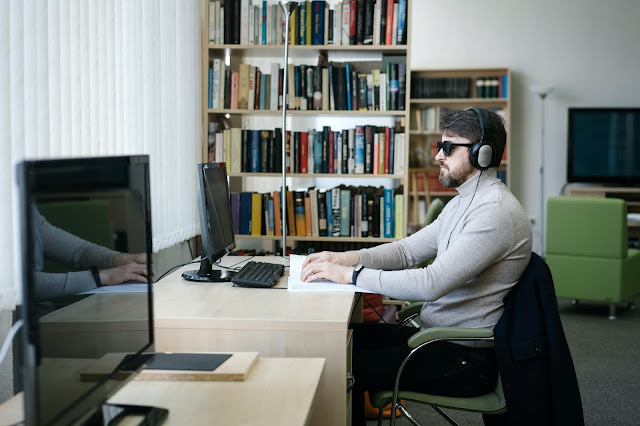A vital motivator for most learners is the sense of being part of a community where your efforts are acknowledged and where you get support and encouragement both from teachers and peers. Ever since MOOCs came on the scene course designers have been searching for ways of building a sense of community even in large-scale courses of hundreds or even thousands of participants. Courses have discussion forums, volunteer facilitators/moderators, chatbots, options for self organising group work and so on, but the quest for that ideal solution to make these course more "sticky" continues. It is not enough to simply suggest groups and let the participants get on with it. The groups need to be guided and encouraged, rules of engagement need to be agreed on and a community of trust must be established and to do this usually requires a facilitator/moderator with experience in team-building. This is very hard to scale since it can be difficult to find enough people to act as facilitators and when it comes to courses with thousands of participants this becomes virtually impossible. Furthermore, good facilitation requires some degree of training. Thus, in a course where you aim at offering a consistent experience to all participants, facilitators should share a common idea of how to support the groups..
There is an excellent description of providing this kind of support on a relatively large scale in a post by Joitske Hulsebosch, Large-scale online course design? Use collaborative learning for high engagement. She describes the development of an open online course in food systems with an intake of around 500 participants. Learners are divided into groups though this is not compulsory and each group has a volunteer mentor to motivate and support them. The organisers put a lot of work into creating a course community with onboarding activities like interactive maps to show where everyone lives (enabling people to link with others in their region) and a gamification element rewarding contributions and active participation in activities. Groups are encouraged to create a name for their group thus forming a common identity and the establishment of group chats in Signal or Whatsapp is encouraged. They are also careful to make sure that those who start the course are sufficiently motivated.
In addition to social learning and good content, I think there were a number of other factors that helped to keep people engaged. First of all, a good intake and selection. People were asked if they had time (some answered no and were therefore not selected :)) and what their motivation was. The 500 fortunate participants were selected from more than 900 applications. In addition, there was continuous feedback from the experts and some mentors on the contributions. This was highly appreciated and even more feedback was requested. In addition, there was a clear structure with a final weekly assignment: the gateway to the next week. When all gates were completed, people could download a certificate. This was certainly an incentive for many participants.
In this way they achieved a 54% completion rate and high learner satisfaction, remarkable for this type of open course. This cannot compare to a regular campus course since the participants are doing the course in their spare time and it is not part of a degree programme that they are committed to with financial consequences for non-completion.
It is clear that collaborative and social learning have contributed to keeping participants engaged in the food systems e-course. The organization and supervision takes time, but you can minimize it through clear instructions and the use of voluntary mentors. Online you have to look redefine participation differently compared to face-to-face. You will never get 100% of participants doing all learning activities. Someone who does not fully participate but does participate in two online sessions can also learn something from this what he / she wants to learn, self-management and making choices become more important. It seems that a percentage of 50% is a good achievement for a large-scale online course.
This approach is similar in many ways to our experience with a course called Open Networked Learning, aimed at university teachers who want to explore the opportunities and challenges of online teaching and learning. We are colleagues from four Swedish universities who organise the course and run it twice a year together with a network of up to 15 partner institutions from Sweden, Finland, Germany, Switzerland, South Africa and Singapore. It's on a smaller scale compared to the food systems course, with usually 100-130 participants from the 13-15 partner institutions plus about 30 open learners who are admitted each term on a first-come-first-served basis. We have a good completion rate, usually around 70-80% and this is largely due to the fact that group work is a central feature.
The focus of the course is problem-based learning (PBL) and we divide the participants into groups with 8 members per group. Each group has a facilitator from one of the partner institutions and a co-facilitator who is a former participant who volunteers to support a group as a study buddy; someone who knows how it feels to participate and can offer advice and understanding. We provide support for these facilitators in the form of a course guide and regular meetings to discuss the groups' progress and current issues. This way we hope to offer a consistent experience for all participants and all facilitators share a common approach to facilitation.
The institutional learners get local support and also receive a certificate (or in some cases credits) for their efforts whilst the open learners have no such foundation and this has sometimes led to lower motivation. To counter this we now we now offer online support sessions for them and the response has been extremely positive. We have also found that quite a few of our co-facilitators are former open learners who volunteer to return for another course where their only reward is a recognition certificate. They simply enjoy the course and want to continue to be a part of it. That in itself is a reward for us as organisers.
Theoretically anyone is free to follow the course since the activities (webinars, recordings and tweetchats) and the topic work are all available on the public course site. However we have found that those who try this option seldom stay for long since they do not have access to the course community and above all do not have the support and motivation of joining a group. So now before the course we contact all the open learners and inform them that participation in a group is a prerequisite for certification though they are welcome to follow informally on their own.
Our model is probably not very scaleable because recruiting and supporting the facilitators would be too time-consuming and increase the risk of groups not getting a consistent course experience. So we keep the numbers low by recruiting through the partner institutions and using word of mouth to attract open learners. The example of the food systems course described above does however show that maybe a certain upscaling is possible. It's a fine balance though to combine the intimacy of group work with a large scale course environment.
















